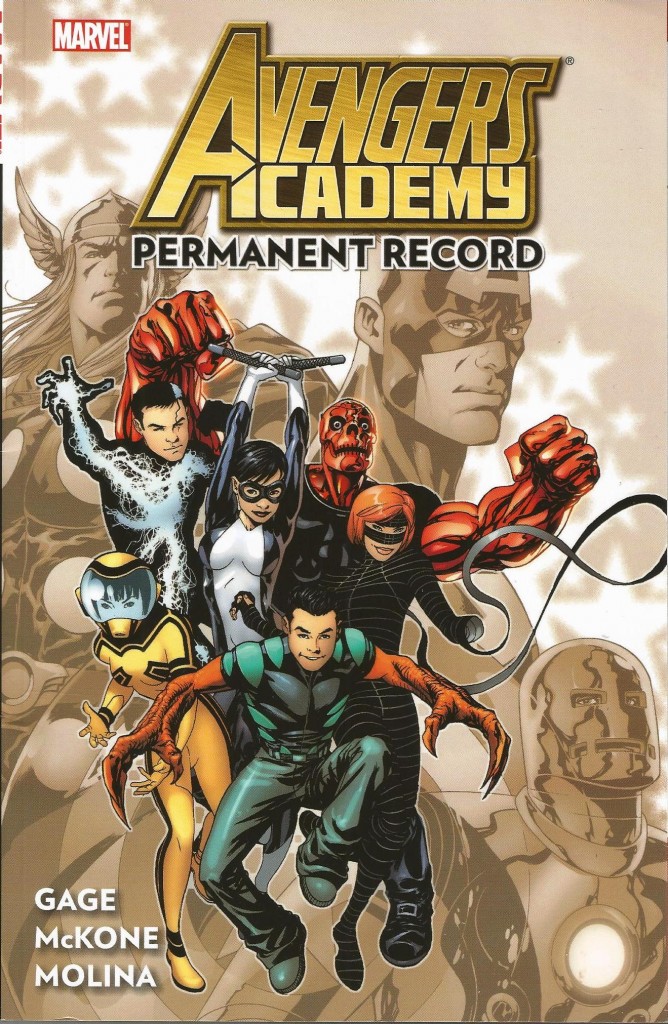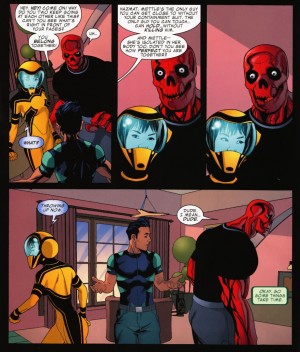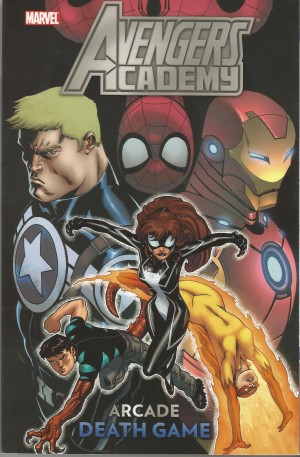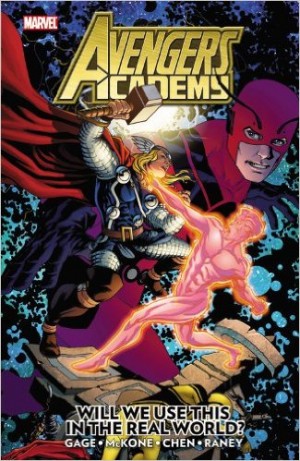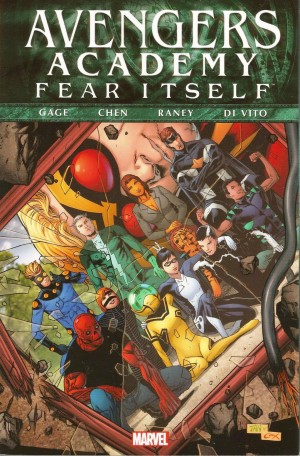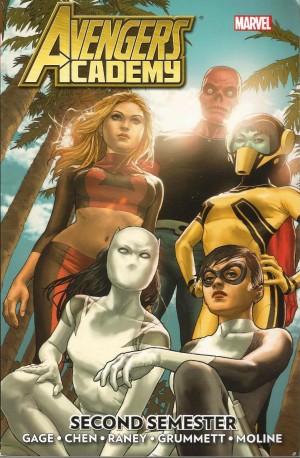Review by Will Morgan
Following the events of the Avengers: The Initiative series, in which the Marvel universe’s training system was revealed to be corrupted and subverted by Norman Osborn, a follow-up programme was established. Titled Avengers Academy, it relied on one location, (albeit an unusual one – Henry Pym’s Tardis-like ‘Infinite Mansion’) rather than the nationwide sweep of the Initiative, and opened with a small class of six select pupils, to be taught by members of the Avengers and other heroes, and trained to use their abilities for the greater good. That agenda was completely sincere, but there was another objective not disclosed to the students.
Our freshman class – Finesse, Hazmat, Mettle, Reptil, Striker, and Veil – were not neccessarily the best, the brightest, or the most powerful. They were the most dangerous. The ones who were tortured or tormented to trigger their powers, or who were judged to be severely unstable in some way. The heroes feared that these damaged teenagers would all too easily turn to the Dark Side. In short, they weren’t there to become the next Captain America; they were there in hopes of preventing them from becoming the next Red Skull.
Our young heroes prove their intelligence by uncovering this hidden agenda in short order, and rapidly flipping it around – very publicly – on their mentors. Our faculty in this opening arc – Hank Pym, Tigra, Speedball, Justice, all returning from the Initiative – and new tutor Quicksilver, make a rapid recovery, but realise that they are going to have to marshall all of their resources to keep these kids in line, particularly given such an early breach of trust.
Each of the students, all but one a newly-minted character for this series (Reptil was seen for about thirty seconds in Initiative, having been imported from a cartoon show!), is the P.O.V. character for one of the chapters. Scripter Gage proves as adept at getting into the character’s heads as ever, and by the end of each section, you’re intrigued by the inner working of the tortured teens, with borderline-sociopath Finesse being the standout of the opening arc, as she cheerfully sexually manipulates her fellow students and blackmails Quicksilver into helping her uncover her origins. Blunt, brilliant, and completely lacking in appropriate social skills, she’s kind of an Amy Farrah Fowler of the super-hero set.
Artist Mike McKone’s art has been dismissed by some as generic. It’s a criticism not without merit, but it is a clean, attractive style that enhances the narrative, and his smooth renderings make the occasional breakout of intense emotion all the more striking. Plus, there are few professionals in the industry today who can handle action sequences with equal vigour and fluidity.
It’s a considerable achievement on the part of the creators. The opening chapters of this series are akin to attending a party with a bunch of complete strangers, and leaving with, if not exactly friends, at least a group of people you very much want to know better.
Sundry variant covers, and some more-interesting-than-usual musings on the characters by Gage, are the ‘bonus’ features. After a diversionary and frankly inconsequential one-off, Arcade: Death Game, the series proper continues with Will We Use This In The Real World?
